Jason Micheli's Blog, page 13
April 12, 2025
A Work of the Three Person'd God
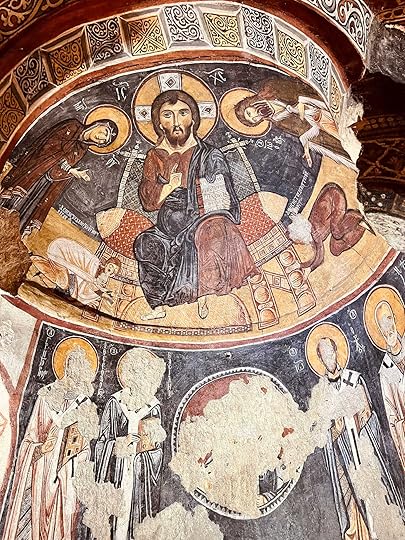
If you appreciate the work, pay it forward. Literally! Become a paid subscriber.
“The natures, however, which combined into this real union were different, but from the two together is one God the Son, without the diversity of the natures being destroyed by the union. For a union of two natures was made, and therefore we confess One Christ, One Son, One Lord . . . two natures, by an inseparable union, met together in him without confusion, and indivisibly.”
— Cyril of Alexandria
April 11, 2025
"Good Friday is Not the Dead Center of the Gospel"
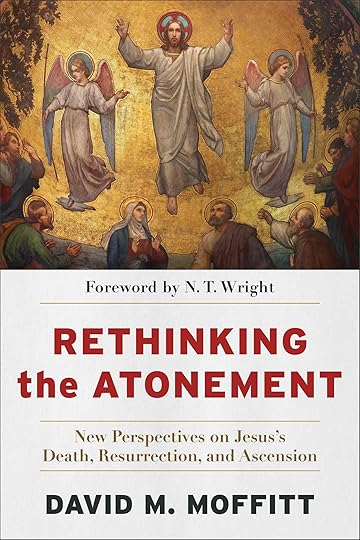
If you appreciate the work, pay it forward. Literally! Become a paid subscriber.
David Moffitt’s book Rethinking the Atonement: New Perspectives on Jesus’ Death, Resurrection, and Ascension has been indispensable to me, and this is a conversation I wanted to make available to preachers and believers in time for Holy Week and Eastertide.
Show NotesSummary
In this conversation, David Moffitt discusses his insights on the Epistle to the Hebrews, emphasizing the significance of resurrection, sacrifice, and atonement in understanding Jesus' role as high priest. He explores the implications of these themes for contemporary theology, particularly in relation to the Passover and the nature of intercession. Moffitt also reflects on the influence of early church fathers and the narrative of liberation in Hebrews, providing a comprehensive view of how these elements interconnect in the Christian faith.
Takeaways
David Moffitt emphasizes the importance of understanding the resurrection in the context of the Epistle to the Hebrews.
The traditional views of sacrifice in preaching may not align with the biblical text.
Moffitt's research highlights the significance of the ascension in understanding Jesus' role as high priest.
The concept of 'It Is Finished' requires deeper theological exploration beyond the crucifixion.
Atonement is not solely about Jesus' death but involves his ongoing intercession for humanity.
The Passover narrative is crucial for understanding liberation from sin and death.
Moffitt argues that the scapegoat imagery in Leviticus informs our understanding of Jesus' sacrifice.
The early church fathers provide valuable insights into the interpretation of sacrifice and atonement.
Hebrews presents a narrative of liberation that parallels Israel's journey from Egypt.
Moffitt's work encourages a reevaluation of assumptions in contemporary biblical studies.
Sound Bites
"I had to buy a second copy."
"The death of the animal was not the focal point."
"We ought to look at it."
 Get more from Jason Micheli in the Substack appAvailable for iOS and AndroidGet the app
Get more from Jason Micheli in the Substack appAvailable for iOS and AndroidGet the app
April 10, 2025
Holy Week Conversations: Substack Live
Hello Everyone,
Teer and I hopped on this afternoon for a test run on Substack Live, and it was not a disaster.
We wanted to let you know that starting on Monday we will gather live with friends every day at 12:00 EST to study the lectionary scriptures for Holy Week.If you are a subscriber, then you will get an email with a link to the Live Video. Join us and offer your own thoughts and questions. If you cannot join us live then the video will be available after the fact.
 Get more from Jason Micheli in the Substack appAvailable for iOS and AndroidGet the app
Get more from Jason Micheli in the Substack appAvailable for iOS and AndroidGet the app
April 9, 2025
Amazing Dis-Grace

If you appreciate the work, pay it forward. Literally! Become a paid subscriber.
I remember a sermon I heard preached in Miller Chapel when I was a student at Princeton Theological Seminary. In an artful, show-don’t-tell way, the preacher for the day drew an unnerving parallel between Jesus’ death upon the cross and Matthew Shepard’s death, beaten and tied to a barbed wire fence in the Wyoming winter. Shepard, one observer noted, was abandoned and left dangling on the fence “like an animal.”
The season for that sermon was Lent I believe. I can’t recall the specific text nor can I recall the thrust of the preacher’s argument, but I do remember, vividly so, the consequent chatter the preacher’s juxtaposition provoked. On the one hand, my more conservative classmates bristled at an ‘unreligious’ story being equated with the passion story. The parallel with Matthew Shepard, they felt, mitigated Christ’s singularity and the peculiar pain entailed by crucifixion. “Christ was without sin and Matthew Shepard was…a sinner” I remember someone at a lunch table being brave enough to say aloud what others, no doubt, were thinking.
On the other hand, my liberal colleagues, who typically had less use for the cross, applauded the sermon, seeing the mere mention of a gay person from the pulpit as an important social justice witness. They saw both Matthew Shepard and Jesus Christ as victims of oppression against which we’re called to minister. Where conservatives saw Christ’s cross as unique, they saw it as symbolic of the unjust sacrifices humanity repeats endlessly.
Both groups of hearers received the day’s message according to the reified political and theological lines we had brought to chapel that morning and, in doing so, we unwittingly underscored Paul’s insistence in his Corinthian correspondence that the message of the cross is deeply offensive to the religious and ill-fitting to the assumptions of the secular. The religious will forever conspire to mute the cross’ offense, and the secular will always prefer more palatable notions of justice, not to mention more charitable appraisals of humanity.
Only now, having reread Fleming Rutledge’s book, The Crucifixion, am I able to grasp the word the preacher was likely attempting to proclaim that day in Miller Chapel.
The preacher was not announcing that Christ died a martyr’s death, a victim of injustice in solidarity with other persecuted victims. Nor was the preacher suggesting Christ’s death was of a type endlessly repeated rather than absolutely singular.
The preacher was focusing not on the fact of Christ’s death but on the manner of it. The manner of Christ’s death, the impunity of it, is what proved to be a stumbling block to us students every bit as much as the Corinthians.
Like Matthew Shepard, Christ’s death was primarily one of shame and degradation.
April 8, 2025
What is the Gospel Meant to Do to Its Hearers?
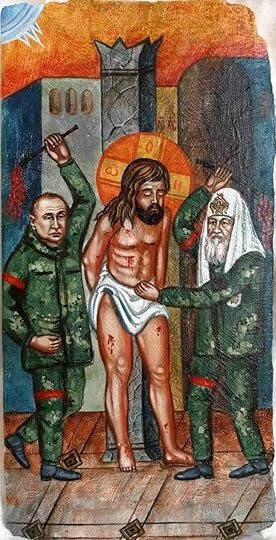
If you appreciate the work, pay it forward. Literally! Become a paid subscriber.
The lectionary for this Palm Sunday assigns the church Psalm 118, a prayer whose answer the welcoming crowds impute to Jesus as he rides a colt into Jerusalem.
Every year during Passover week Jerusalem would be filled with approximately 200,000 Jewish pilgrims. Nearly all of them, like Jesus’s friends and family, would’ve been poor. Throughout that Holy Week these thousands of pilgrims would remember how they’d once suffered under a different empire and how God had heard their cries and sent someone to save them.
“Hosanna!” they’d shout for Messiah, quoting Psalm 118, “Save us!”
Every Passover therefore was a possible inflection point. Flexing his political muscle, every year at the beginning of Passover week, Pontius Pilate would journey from his seaport home in the west to Jerusalem, escorted by a military triumph, a parade of horses and chariots and armed troops and bound prisoners, all led by imperial banners that declared “Caesar is Lord.” A gaudy but unmistakeable display of power.
Only one year, at the beginning of that same week, Jesus comes from the east. His “parade” starts at the Mt of Olives, two miles outside the city, the place where the prophet Zechariah had promised God’s Messiah would one day usher in a victory of God’s People over Israel’s enemies, thereby establishing peace.
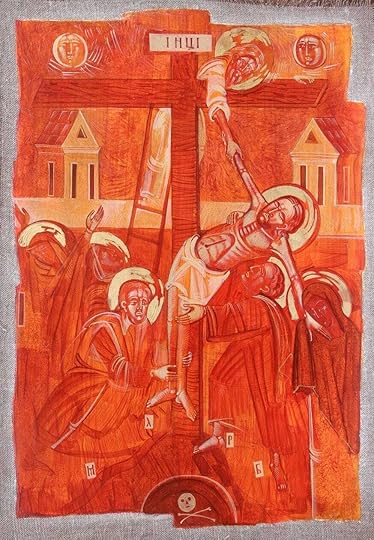
For those who think Christianity is primarily information about access to heaven and believe that Jesus is Secretary of Afterlife Affairs, Palm Sunday is an uncomfortably and overtly political occasion. The passages assigned for Palm Sunday will not abide the assumption that the good news of the gospel is little more than a salve for weary souls.
Palm Sunday marks Jesus’s penultimate, prophetic mockery of Rome’s pretensions. And no reader of the Old Testament can miss that the defeat of Israel’s enemies was, just so, the simultaneous defeat of her enemies’s gods.Thus—
The gospel is more than comfort for sinners.
The gospel is more than faith-based morals for our politics.
The gospel is more than time-tested principles for our personal projects.
The gospel is a summons.
We spend a lot of time in the church attempting to clarify the answer to the question, “What is the gospel?” And at a time and in a denomination where the answer to that question is increasingly confused, it’s an appropriate question to ponder.
But the answer to the question, “What is the gospel?” will always only be incomplete if we cannot also answer a corollary question, “What is the gospel supposed to do to its hearers?” What is the Gospel meant to do on its hearers?
April 7, 2025
Ransom Captive Israel
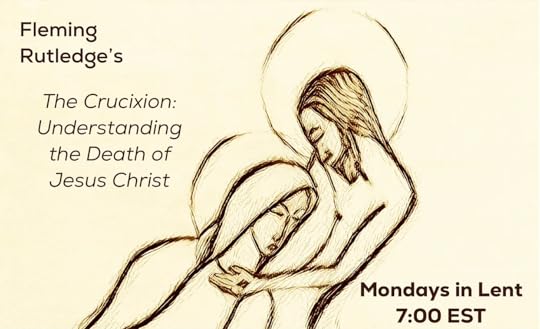
If you appreciate the work, consider becoming a paid subscriber.
Remember, if you’d like to join us live tonight at 7:00 EST, here is the link.
Show NotesSummary
This conversation delves into the themes of atonement, ransom, and redemption within Christian theology, exploring historical contexts, cultural narratives, and the implications of these concepts for understanding the nature of God and Jesus' role in salvation. The discussion emphasizes the importance of viewing atonement not merely as a transactional concept but as a profound narrative that shapes faith and understanding of divine grace.
Takeaways
The journey through Asia Minor reveals the physicality and challenges of early Christian missions.
Ransom and redemption are complex themes that require a nuanced understanding beyond transactional interpretations.
Cultural narratives around redemption resonate deeply with contemporary audiences, reflecting a desire for transformation.
The cost of redemption is significant, emphasizing God's involvement in human deliverance.
Understanding Jesus' role in redemption challenges traditional views of him as a passive victim.
The resurrection is central to the Christian faith, framing the understanding of atonement.
Metaphors in scripture serve to convey deeper truths about God's nature and human experience.
The interplay of Old Testament themes enriches the understanding of New Testament atonement.
Grace is a gift that cannot be repaid, highlighting the depth of God's love.
The conversation encourages a re-examination of how atonement is preached and understood in modern contexts.
Titles
Rethinking Atonement: A Journey Through Theology
The Cost of Redemption: Understanding Atonement
Sound Bites
"I need my side, can't you see?"
"God died on the cross."
"Jesus is the one who saves us."
 Get more from Jason Micheli in the Substack appAvailable for iOS and AndroidGet the app
Get more from Jason Micheli in the Substack appAvailable for iOS and AndroidGet the app
April 6, 2025
It is NOT Finished
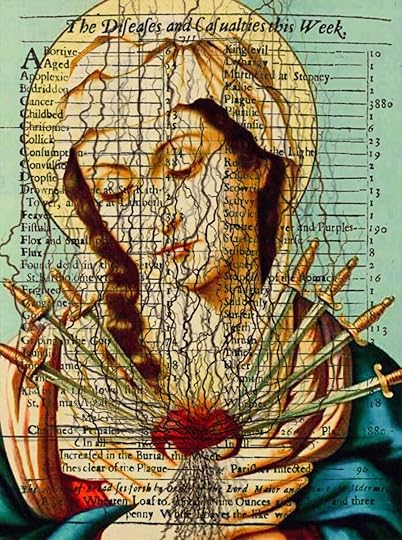
If you appreciate the work, pay it forward. Literally! Become a paid subscriber.
I concluded our Lenten sermon series on the Sorrows of Mary by preaching on John 19.18-30.
At the beginning of Russia’s invasion of Ukraine three years ago, just before Palm Sunday, at the United Nations Security Council meeting, representatives from the Ukrainian Security Service presented text messages they had captured from the smartphones of Russian soldiers killed in action. In one thread, a soldier had written to his mother, describing how Vladimir Putin’s invading army is “hitting everyone, even civilians.” The soldier continues, informing his mother that he is no longer in Crimea doing training exercises, as she had been told by her government.
When his mother responded in the thread by asking if she can send her boy a care package, he replied, “Mother, the only thing I want now is to hang myself...this is real war, mom. I’m scared. I’m so scared, we’re hitting everyone, even civilians— women and children even. We had been told that people would welcome us here but they jump under our vehicles, not letting us pass. They call us fascists. Mom, it’s so hard.”
Finally enthroned upon his cross, this Mother’s son is neither frightened nor overwhelmed. Throughout the Fourth Gospel Jesus has spoken of his passion as the hour to which his path inexorably led. At the Passover, between noon and three— this is the hour to which he has been headed from the beginning.
On purpose!
Not as the passive casualty of empire.
If his passion is not harrowing for him, then it is a torment for her.
Indeed it must have taken great faith bordering on delusion to see in his crucified body the one of whom she sang at the Annunciation. One ancient icon of the church titles the pregnant Mary, “Container of the Uncontainable.” At the foot of his cross, the Container of the Uncontainable bears the unbearable. In fact, at Golgotha Mary’s hour arrives as well. As her son teaches the disciples on Holy Thursday, “Truly, truly, I say to you, you will weep and lament, but the world will rejoice; you will be sorrowful, but your sorrow will turn to joy. When the woman is in travail she has sorrow because her hour has come.”
“Son, it’s so hard.”
Hollis Gause was a Pentecostal theologian who died a decade ago. He wrote a meditation on Mary’s experience at the foot of the cross. In it, he imagines Mary looking up at her dying child, realizing, with a start, that this boy, born all those years ago in disgrace and ignominy, now is dying under an even darker sky.
Right in that moment, Gause suggests, Mary feels the stab of pain:
“Now the final words of Simeon’s prophecy rushed through her heart like a dagger, “A sword shall pierce your soul.” Mary thought, “Now I know what those words mean. Every nail in His hands and feet was driven into my heart, and it bleeds as profusely as His hands and feet. Is this the way that the thoughts of many hearts will be revealed? Are these nails the scalpels that lay back the tissues of the heart exposing the innermost thoughts? They certainly expose the hearts of our rulers… Corruption pours out of them like the blood out of my Son.”
If Rome’s nails are the scalpels that peel away the tissues of our hearts, if the sword prophesied by Simeon has finally pierced Mary’s heart, then Christ’s own heart belies his frightful appearance.
Enthroned upon his cross, Christ does not sorrow; he proclaims, “Woman, behold thy son!”
Behold.
In a New Yorker article entitled “The Woman Behind the Camera at Abu Ghraib,” Errol Morris probes the atrocities committed by American soldiers in Iraq. “Of course,” he writes, “the dominant symbol of Western civilization is the figure of a nearly naked man, tortured to death — or, more simply, the torture implement itself, the cross. But our pictures of the savage death of Jesus are the product of religious imagination and idealization. In reality, he must have been ghastly to behold.”
“Woman, behold your son.”
Errol Morris’ essay continues, “Had there been cameras at Calvary, would twenty centuries of believers have been moved to hang photographs of the scene on their altarpieces and in their homes?”
I think not.
Certainly not his mother.
“He must have been ghastly to behold.”
Errol Morris writes better than Jesus can manage to utter, his chest pulled taut by his cross. Morris saves the most important verb for the end of his sentence, “He must have been ghastly to behold.” The word appears nearly thirteen hundred times in the scriptures. As Fleming Rutledge comments on the now antiquated biblical word, “When the word translated “behold” appears in the Old and New Testaments it does not simply mean “see” or “look,” contrary to recent translations. It denotes a powerful revelation leading to understanding, insight, and faith.”
Just so:
Exactly what does the Son unveil to his Mother from his cross?
To what precisely does he summon her to see by faith?
In the Gospel of John, Jesus only ever addresses his Mother as “Woman.”
As though, says the church father Origen, she is the Woman.
A New Eve.
“Daughter of thy Son,” Dante writes.
“Woman, behold, thy son! Behold, thy Mother! ”
No matter how her son addresses her, what does he wish her to grasp by beholding him on his cross? And what does he mean to unveil to us?
Surely what John does not intend us to see is Jesus spending his last moments minding after Mary. As Stanley Hauerwas writes, this word from the cross is not “simply an example of a son’s solicitude for his mother’s welfare.” Nor should we expect to see anything so ordinary as Jesus securing care for Mary. Everything in the Gospel of John is pregnant with theological meaning. What’s more— notice— we are bidden by the LORD to behold not only him but also her and, in beholding the both of them, truly see.
But see what exactly?
Frank Dunham was a career prosecutor and defense attorney in Washington before becoming the federal public defender for the Eastern District of Virginia in 2001. Frank argued the habeas corpus case of Yasser Hamdi before the Supreme Court against the Bush administration in 2004. In the summer of 2006, Frank's wife, Eleanor, wandered into my office one morning.
“I was in the sanctuary,” she said, as though I needed some explanation.
“I was in the sanctuary praying. I've never done that before. I've never done this before,” she said.
Ellie was in the church database, but I'd never seen her in worship before. After hemming and hawing, she finally opened up about why she had been praying in an empty sanctuary on a Tuesday morning. Her husband, Frank, just sixty-four years old, was dying of brain cancer.
“I'm afraid he's in denial. I think we're all in denial,” she told me.
And then she asked me, “Would you go by the house and talk to him? Is that something you do? Frank's got that look he gets during a trial when he's afraid he's going to lose the case.”
The first time I visited Frank he was still strong enough to greet me at the front door and reluctantly gesture me into the house like I was the Schwann's salesman.
As I followed him into the kitchen, Frank offered up a disclaimer, “I’ve not been a very good member of the flock, preacher. I figured there wasn't much to Christianity other than a community I didn't need, trite sermons I couldn't stomach, and activities I didn't have any time for. By all means, I’m good with the Golden Rule, but I could never get too serious about a religion that begins with a fantasy. I mean, a miraculous virgin birth— are you effing kidding me? ”
He looked over his shoulder to see if his words would cause me to scurry.
I smiled.
Nodding, he gestured for me to sit down at his kitchen table.
“You know,” I replied, “There's more to Christianity than the moralisms you learned as a kid in Sunday school."
He laughed like he did not believe me at all.
So I tried a different angle.
“Besides,” I added, “the Virgin Birth does not mean Mary conceives Jesus apart from Joseph.”
“It doesn’t?” he put his paper down and laid his reading glasses on page A3.
“Of course not,” I said, “That would be a stupid reason to include it in the creeds.”
“If this is evangelism, you’ve got a funny way of going about it.”
And then he waited for me to elaborate.
“The doctrine of the Virgin Birth is not about sex,” I said, “It’s about blood.”
He squinted at me.
“Blood? I don’t understand.”
“The dogma is not merely that Mary was a virgin when she conceived Jesus,” I explained, “The dogma— the orthodox teaching— is that Mary remained a virgin even after delivering Jesus; that is, she gave birth without any issue of blood.”
He folded his arms across his chest and raised an eyebrow at me, “If you’re trying to make me into a believer, you’re sort of working me in the opposite direction.”
I laughed.
“Out of curiosity,” he continued, “Why is that so important?”
“You really don’t remember your Sunday School, do you? It goes back to King David. Remember, he was not permitted to build the temple in Jerusalem. God did not allow David to construct the temple because of Uriah. Which is to say, the LORD refuses to have his temple through the shedding of blood.”
“What’s that have to do with Jesus and Mary?”
“Since Jesus is God,” I answered him, “Mary is the temple, thus her virginity.”
He beheld me over the bridge of his reading glasses.
I met his gaze.
“If you’re not going to be a believer, Frank, then you ought at least know that the church is daring you to reject a great deal more than you realize.”
He smiled a reluctant grin.
“I know I’m dying,” he said, “I’m not in denial, even if Ellie fears I am.”
I nodded.
“So,” he said, “You’ve got limited time to persuade this juror, and since you don’t appear all that adept at evangelism you’re going to need as many cracks at it as you can get. Come again anytime.”
Just as his Mother is the virgin temple, so too does Jesus repeatedly insist that the flesh he receives from Mary is the Container of the Uncontainable. Almost a dozen times in the Gospel of John he points to the temple so as to gesture to himself. Just after the wedding at Cana, Jesus cleanses the temple in Jerusalem. And when those gathered there ask him what the performance of this sign signifies, Jesus answers by speaking of a different temple, “Destroy this temple, and in three days I will raise it up.”
Like his Mother’s womb, his flesh is the dwelling place of God on earth.
And like the Virgin Mary, Jesus has at last arrived at his hour without the shedding of blood.
From Cana to Calvary, he has loved his enemies and turned the other cheek. From his cross even, he pleads the Father’s forgiveness for those who know precisely how they are trespassing him. In the Garden of Gethsemane, at the precipice of his passion, when Peter draws a sword to strike Caiphas’ soldier, Jesus rebukes Peter, “Put your sword into its sheath; shall I not drink the cup that the Father has given me.” From the beginning, the New Adam, the son of the Second Eve, has embodied and born witness to the peaceable Kingdom of God. As he promised to John the Baptist in the Jordan River, Jesus has fulfilled all righteousness.
And now, enthroned upon his cross and breathing his last— obedient to the end, Jesus bids us to behold the completion of the LORD’s temple on earth.
He has built it without shedding another’s blood.
Scripturally speaking—
The Son is as much a virgin as his Mother.
The temple that is his body is not the only beholding to which the Bible bids us, for the flesh Mary gives him he takes to the heavenly tabernacle where he presents it to the Father enthroned there. As the church father Gregory of Nazianzus preached, “Even at this moment, as a human being, Jesus is making intercession for my salvation, for he continues to wear the body that he assumed.”
Despite what Christ declares from his cross, it is not finished.
His work is not done.
Indeed it is perpetual.
As the Letter to the Hebrews proclaims, “Christ has entered, not into holy places made with hands, which are copies of the true things, but into heaven itself, now to appear in the presence of God on our behalf.”
Again the epistle declares that Jesus “being made perfect, became the source of eternal salvation to all who obey him, being designated by God a high priest after the order of Melchizedek.”
Notice:
Jesus is the source of salvation not on the basis of his cross.
Jesus is the source of salvation on the basis of his priesthood.
Salvation is not a past act.
Salvation is present-tense.
Jesus is saving you.
Or as Paul puts it in chapter four of Hebrews, “Since then we have a great high priest who has passed through the heavens, Jesus, the Son of God, let us hold fast our confession. For we do not have a high priest who is unable to sympathize with our weaknesses, but one who in every respect has been tempted as we are, yet without sin. Therefore, let us with confidence draw near to the throne of grace, that we may receive mercy and find grace to help in time of need.”
As New Testament scholar David Moffitt writes:
“The atoning work that Jesus continues to perform now is that of maintaining the new covenant relationship between God and his people, work that is necessary while the covenant people are still in the process of being sanctified and have not yet been perfected…As our high priest of the new covenant, Jesus now ministers in the heavenly temple by offering to the Father the ongoing worship that maintains God’s new covenant relationship with his people and mediates the blessings and promises associated with that relationship.”
In other words, the divine filiation in verse twenty-six of this passage is made possible only because Jesus is our great high priest. Mary is our Mother, the Beloved Disciple is our brother, only on the basis of the new covenant which Christ even now mediates on our behalf.
Quite simply:
What we behold upon the cross, the perfect faithfulness of the Son, is no use to us at all— it is not finished— if he is not raised to present his “indestructible life” to the Father in heaven’s holy of holies.
David Moffitt continues:
“Because Jesus ascended into the heavenly holy of holies and remains there, it follows for the Letter to the Hebrews that Jesus is the high priest who can guarantee that the new covenant relationship is perpetually maintained, something no earthly high priest could do because of death and because the law never brought about perfection. Because Jesus lives with death behind him, he is always able to intercede for his people and so is able to save them…The logic of Hebrews implies that if Jesus were not actively interceding for his people, their salvation would not be possible. Yet this implication suggests another: Jesus’ followers need ongoing atonement. The very work that the high priests on earth could do only once a year is done now by Jesus continually.
Because he is resurrected, Jesus is able to serve as our intercessor without interruption.”
It is not finished.
The sacrifice is not complete, until the risen Jesus offers his own indestructible life to the Father in the heavenly tabernacle on your behalf.
And he does it not once but day after day after day.
Until the end of days.
For you.
Behold!
Frank's memory faded as the tumor pressed against his brain. So each time I visited him before he died, we had some version of our first conversation. Every time he insisted he could not buy into a faith that began with a fantasy like the Virgin Birth.The second time I visited Frank I found his kitchen table saddled with newspapers. The way the Post and the Times lay open underneath his coffee mug I could tell he had been studying the stories about the trial of Zacarias Moussaoui, the only defendant charged in the attacks on September 11th. And that's when Frank told me how he had been Moussaoui’s lead defense lawyer until he'd become too ill to continue. From there, Frank went on to share with me the highlights from his resume. It was clear that now he was nearing the end of his life, he was coming up against the question of whether his life, the sum of it, justified him.
Frank stood up from the kitchen table and, in his bathrobe and slippers, shuffled over to a framed picture on the wall. It was a courtroom artist's rendering of Frank in court during a case. Frank in chalk or colored pencils standing before a judge. He pointed to it like the image could be the dust jacket for his entire life story.
“When I get to the pearly gates, will it be enough?” he asked me, “The good I've done— tried to do. Is it enough?”
“Of course it’s not enough.”
He pushed his glasses up his nose and squinted at me.
“Did it ever occur to you,” he asked, “That maybe your personality is better suited for a different line of work?”
“It occurs to me every damn day,” I said, “But that’s precisely my point. It’s not a question of whether or not we’re enough. We need to be made perfect.”
“Well, I’m about out of time for self-improvement,” Frank replied, “The gavel’s about to come down on me.”
“Then it’s a good thing it’s not your work at all, Frank”
He turned to me like I was a witness whose testimony had suddenly veered off course.
“Exactly what makes Mary a virgin is what qualifies Jesus to be your intercessor. You’re an attorney, Frank. Just think of it— in Christ you have an Advocate whose defense of you will never rest.”
“I reckon that would be a good thing.”
“No,” I replied, “Not a good thing; it’s the good news.”
“Still,” he hedged, “When it comes to faith, I’m a hung jury. I don’t know that I can believe.”
“Why don’t we let Jesus take care of that?” I said, “I’m just an inept evangelist, remember? He’s your high priest. And his work is not finished until he comes again.”
Maybe it's because his memory finally faded. But I like to think it's because the gospel finally clicked for him. Frank never after asked me about the pearly gates nor did he ever protest that our faith begins with a fantasy.
Behold:
Loaf and cup.
Not only does Jesus rise to present his indestructible life to the Father for you, he erupts from the grave in order to distribute his undestroyable self to you, for you, in bread and wine. This is no more a “Catholic” doctrine than his Mother’s perpetual virginity— it is orthodoxy.
He is more than your pardon.
He is your perfection.
He is more than your salvation.
He is your sanctification.
He is NOW making you more than you can see or imagine.
Don’t believe me? Doubt?
That’s okay, because he who is your Perfection is also your Priest.
So come to his Table.
That I can so bid you is proof— or, as Frank would have it, evidence— that Christ’s work is not finished.
It is perpetual.
It is continual.
It is today.
Come to the table, taste and see.
And bring his work closer to completion.
Because in the End, Christ will say of you, “Behold!”
 Get more from Jason Micheli in the Substack appAvailable for iOS and AndroidGet the app
Get more from Jason Micheli in the Substack appAvailable for iOS and AndroidGet the app
April 5, 2025
"Every House has Death in It"
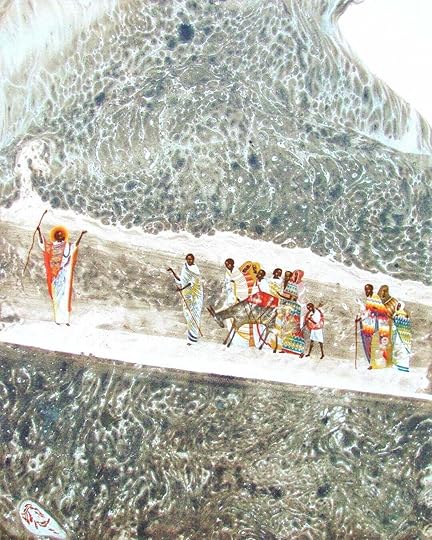
If you appreciate the work, pay it forward. Literally! Become a paid subscriber.
Rabbi Joseph and I connected to discuss Passover and his homily in preparation for the holy day.
Here’s the sermon:
CIP TORAH DRASH APRIL 4, 2025
It is time to prepare for Pesach which begins next Saturday night, April 12; this year our Seders will begin with Havdalah-the ceremony that ends the Shabbat.
How do we get ready to observe this most essential festival in the Jewish calendar; studies show that more people observe the Passover Seder than any other Jewish celebration.
There are three verses in the Torah, Exodus 13:6-7-8 which provide us with the essentials of how every Jew should prepare.
שִׁבְעַ֥ת יָמִ֖ים תֹּאכַ֣ל מַצֹּ֑ת וּבַיּוֹם֙ הַשְּׁבִיעִ֔י חַ֖ג לַיהֹוָֽה׃
“Seven days you shall eat unleavened bread, and on the seventh day there shall be a festival of יהוה.
Verse 6 teaches us about the essential observance of eating MATZAH…the unleavened bread…the food that reminds us each year of the speed with which our biblical ancestors had to leave Egypt…..Pesach Seder is a MEAL of eating, smelling, drinking the foods of the past
מַצּוֹת֙ יֵֽאָכֵ֔ל אֵ֖ת שִׁבְעַ֣ת הַיָּמִ֑ים וְלֹֽא־יֵרָאֶ֨ה לְךָ֜ חָמֵ֗ץ וְלֹֽא־יֵרָאֶ֥ה לְךָ֛ שְׂאֹ֖ר בְּכׇל־גְּבֻלֶֽךָ׃
Throughout the seven days unleavened bread shall be eaten; no leavened bread shall be found with you, and no leaven shall be found in all your territory.
Verse 7 teaches us that Pesach is about the discipline of what we do NOT eat…nothing with Chametz…grains…fermentation….unless of course you are Sephardi…when you interpret these rules differently…in other words…Jews here in Brazil with our wonderful Jewish cultural diversity mixes recipes….for us Rice…some beans…both essential to Brazilian culture remain…..we learn what not to eat…and we learn how each Jewish community has adapted…and adopted….into the cultures that define them today…
וְהִגַּדְתָּ֣ לְבִנְךָ֔ בַּיּ֥וֹם הַה֖וּא לֵאמֹ֑ר בַּעֲב֣וּר זֶ֗ה עָשָׂ֤ה יְהֹוָה֙ לִ֔י בְּצֵאתִ֖י מִמִּצְרָֽיִם׃
And you shall explain to your child on that day, ‘It is because of what יהוה did for me when I went free from Egypt.’
Verse 8 is for me the most essential observance of the festival..
HEGADTAH….the Hebrew Verb from which Haggadah the book that Tells the Story of the first and only/unique Passover in Egypt…a text that developed after 800 years of rabbinic interpretation… the translation of the verb…EXPLAIN…not merely tell the story…but EXPLAIN what happened to YOUR child….today!!
So, when we need to prepare for Pesach…we must go out and buy the foods we are expected to eat….and we must clean out all the foods we must NOT eat….we are used to this kind of preparation.
I suggest the most important act of preparation is the review of the Haggadah for the Seder…whether you are leading the Seder or not….everyone should be ready to EXPLAIN…this is what happened THEN, so I could be free TODAY to attend this Seder.
This year we will have the second Pesach Seder since the Oct 7 attack…555 days of war…59 Hostages remain..35 declared dead…..and more than last year we are all exhausted from the unending suffering of our beloved Israel and the entire area.
Getting ready to EXPLAIN the leaving of our ancestors in Egypt, means we must re-read the 10th plague…the death of all the first born of Egypt.. Ex 12:29-30
In the middle of the night יהוה struck down all the [male] first-born in the land of Egypt, from the first-born of Pharaoh who sat on the throne to the first-born of the captive who was in the dungeon, and all the first-born of the cattle.
And Pharaoh arose in the night, with all his courtiers and all the Egyptians—because there was a loud cry in Egypt; for there was no house where there was not someone dead.
Today we Jews must re-read these few verses not to learn about the past….but to find that our present reality was already part of the Pesach experience…the rabbis are very uncomfortable with the 10 Plague…hence our custom of taking 10 drops of wine out of our cups to diminish our joy…based on a Midrash of God rebuking the Melachim..>Messengers in God’s court who sang when Pharaoh’s army is drown…these too are my children God explains….but these is no Midrash to help us with the death of all the first born…so many deaths were needed for ancient Israel to be free to serve God…SO MANY DEATHS HAVE BEEN NEEDED FOR ISRAEL AND THE JEWISH PEOPLE TO SURVIVE OCT 7.,….the comparison is too obvious to deny…
Can we actually explain the 10th plague..that GOD does need to destroy the Egyptian first born? Because Pharaoh refused to let us go UNTIL the last plague…which finally convinced Pharaoh
The sages teach that Pharoah was the ONLY First Born to survive the 10th Plague….in order that he would give Israel permission to leave…and then he survived the Yam Suf..the Sea of Reeds…to tell the story of God’s power…and he would become the King of Nineveh….where he would help Jonah make everyone repent….can we today accept so much destruction by God….for our destiny? Do those who do Evil change because of God’s power? I cannot explain to my grandchildren that so much destruction in Gaza is God’s work for us!!
We return to Torah….Exodus 13:8
וְהִגַּדְתָּ֣ לְבִנְךָ֔ בַּיּ֥וֹם הַה֖וּא לֵאמֹ֑ר בַּעֲב֣וּר זֶ֗ה עָשָׂ֤ה יְהֹוָה֙ לִ֔י בְּצֵאתִ֖י מִמִּצְרָֽיִם׃
And you shall explain to your child on that day, ‘It is because of what יהוה did for me when I went free from Egypt.’
Our task…our challenge again and again every year is to find a new understanding to EXPLAIN the past and its meaning in our lives….we do this with OUR QUESTIONS….the SEDER is not about answers…from the Torah or the Rabbis…but new questions from the new generations….
There was ONLY ONE actual PESACH…in Egypt…an event filled with death and freedom….God’s presence and Israel’s religious destiny…there was ONLY ONE Pesach…
But there are questions forever that sustains the hope of that one Pesach.
 Get more from Jason Micheli in the Substack appAvailable for iOS and AndroidGet the app
Get more from Jason Micheli in the Substack appAvailable for iOS and AndroidGet the app
April 4, 2025
The Pilgrimage
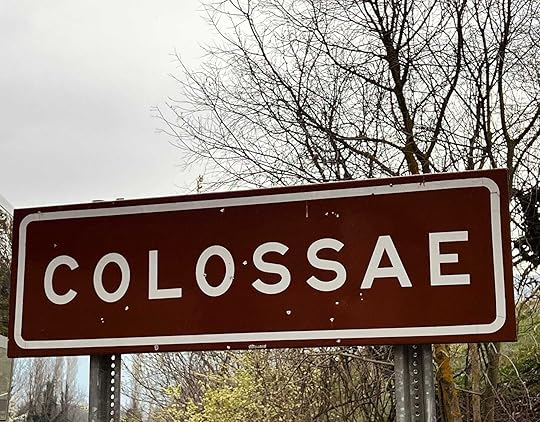
If you appreciate the work, pay it forward. Literally! Become a paid subscriber.
As you know, I recently returned from a pilgrimage to Asia Minor. One of the friends who joined me was Todd Littleton.
My podcast partner Teer Hardy asked Todd and me to break down some of our takeaways from Turkey.
Show NotesIn this episode of Crackers and Grape Juice, Teer checks in with Jason and Todd to reflect on their recent pilgrimage to Turkey (Asia Minor) with Brian Zahnd. They discuss the reasons for the pilgrimage, the historical and theological significance of Asia Minor as the birthplace of Christianity, and how these experiences deepened their faith. The conversation explores the rich history of early Christian sites, the importance of understanding the origins of Christian creeds, and the differences between Eastern and Western Christian traditions. They also share personal insights and observations, such as the absence of crucifixion imagery in Orthodox churches and the challenging terrain early Christians had to navigate. The discussion underscores the value of pilgrimages in connecting modern believers with the broader, ancient Christian community and the complexities of balancing religious and secular life.
Takeaways
Asia Minor is crucial to understanding the roots of Christianity.
The early church was more urban and cosmopolitan than often perceived.
Christianity was a moral movement, not just a set of beliefs.
The significance of sacred places enhances the understanding of faith.
Pilgrimage can counteract the politicization of faith in America.
Historical context is essential for interpreting scripture and church practices.
The church's history is much older than many North American Christians realize.
Experiencing the geography of biblical sites offers new insights.
The early Christians faced significant challenges in spreading the gospel.
Modern Christianity often compartmentalizes faith in ways early Christians did not.
 Get more from Jason Micheli in the Substack appAvailable for iOS and AndroidGet the app
Get more from Jason Micheli in the Substack appAvailable for iOS and AndroidGet the app
April 3, 2025
"Sacrifice" Does Not Mean "To Kill Something"
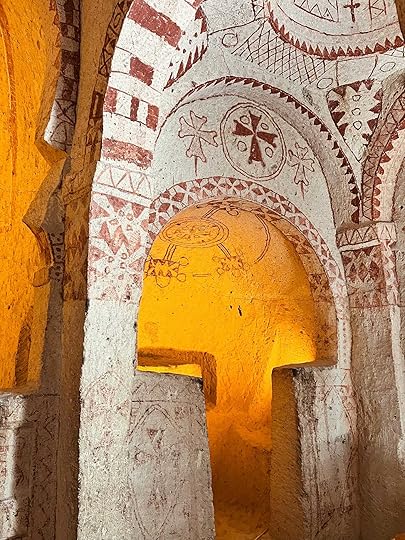
If you appreciate the work, pay it forward. Literally! Become paid subscriber.
In the rousing eighth chapter of his Epistle to the Romans, the apostle Paul writes, "Who is to condemn? Christ Jesus is the one who died—more than that, who was raised—who is at the right hand of God, who indeed is interceding for us.” Despite how contemporary Christians in the West isolate the cross as the central salvific event, note how for Paul the crucifixion is but one event in a sequence of events that culminates in the risen Christ’s present-tense, continuous work as our Great High Priest.
The entire sequence of events— not a one of them individually— constitutes the LORD Jesus’ “sacrifice.”The Book of Hebrews, which the church fathers believed to have been authored by Paul, also displays this sequential, cumulative understanding of the atonement. In particular, the concatenation of incarnation, crucifixion, resurrection, ascension, and abiding intercession is precisely what places Christ’s sacrifice in continuity with the sacrificial order the LORD first bequeathed to his Israel. As David Moffitt puts it, “Jewish sacrifice consists of an irreducible ritual process.”
Jason Micheli's Blog
- Jason Micheli's profile
- 13 followers



